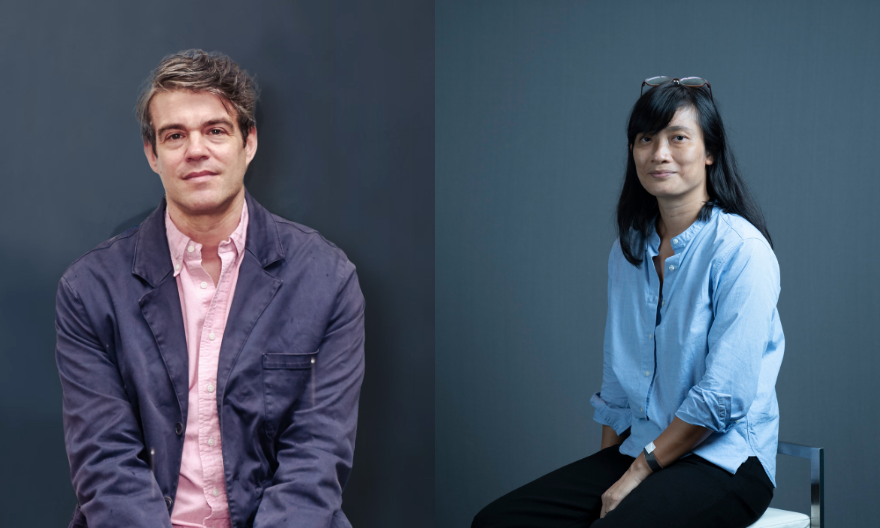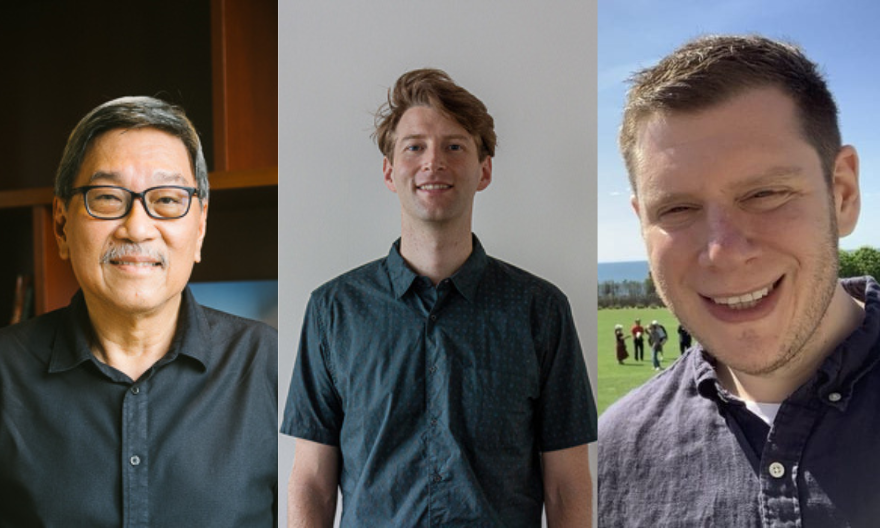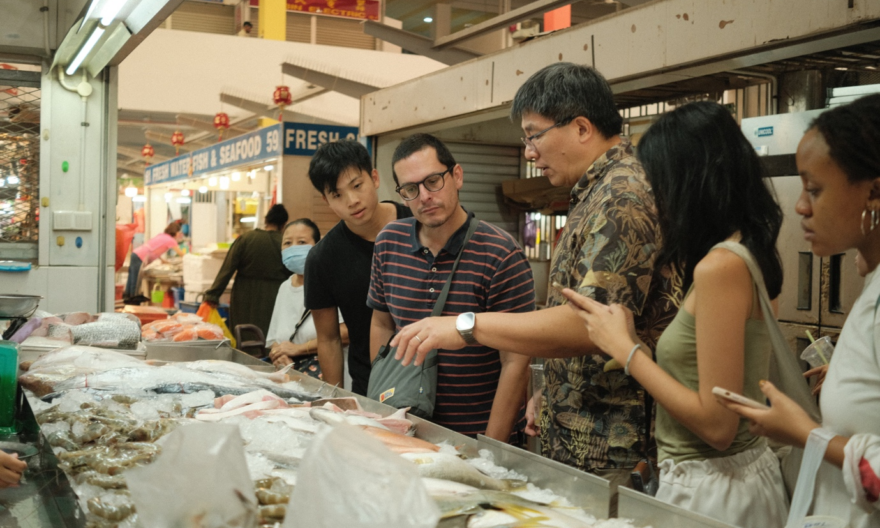Pollen and passion: Finding joy in bee research
Yale-NUS student shares his journey which culminated in a published paper
“When life gives you lemons, make lemonade.” Ask Yale-NUS student Daniel Lim (Class of 2024) about the beginnings of his paper published in Biotropica earlier this year, and he might regale you with an unorthodox tale.
In 2020, Daniel was scrambling to find a summer opportunity after the COVID-19 pandemic threw a wrench in his plans to be based in Timor-Leste for an internship. Fortunately, Yale-NUS College’s staff and faculty had put together a heroic effort to launch several Student-Initiated Research Projects to meet students’ needs, under the annual Summer Research Programme (SRP). The SRP allows students to pursue full-time, funded research in the humanities, sciences, or social sciences during their mid-year break from May to August. Thus, Daniel embarked on an SRP with Yale-NUS Assistant Professor of Science (Environmental Studies) Eunice Tan, doing broad research on citizen science and pollinators in Singapore.
In citizen science, the public helps collect data in the natural world, which bolsters current databases and records by professional scientists. Daniel combed through iNaturalist, a database of observations of biodiversity, for bees, butterflies and other pollinators in Singapore, where the fact that these observations were Global Positioning System (GPS)-tagged to a map of Singapore caught his eye. “Very naturally I thought it would be really cool to correlate these points onto a suitable habitat map for these organisms, like those maps you sometimes see in zoos and encyclopaedias. I absolutely loved to pore over those maps growing up, especially when those maps included Singapore. (Wow! I can find that fish in Singapore waters? Or that bird/frog/snake/mammal around my house? Too cool!)”
And so the seeds of an idea were planted. Daniel would later use Species Distribution Modelling (SDM) algorithms to overlay records of organism locations onto geographic data to create predictive maps of the presence of bee species. In the meantime, the beginnings of a project that would come to define much of his Yale-NUS experience were sketched out. He would go on from this Summer Research Programme to do a Special Project in Science (SPS), and assume a position as a research assistant with The Ecological Adaptations Lab, led by Asst Prof Tan, to further his research.
 Daniel and Asst Prof Tan. Photo provided by Asst Prof Tan.
Daniel and Asst Prof Tan. Photo provided by Asst Prof Tan.
When asked about his experience, Daniel shared, “It was absolutely wonderful working with Asst Prof Tan. It also opened me up to consider and eventually take up Data Science as a minor. She was always a kind and understanding mentor, keeping tabs on me while giving me enough space to breathe, although she never slackened on the rigorous standards that academic writing is subject to.”
Published in February this year, the study, ‘Community science enhances modelled bee distributions in a tropical Asian city’ was done together with Asst Prof Tan, Assistant Professor of Biological Sciences John Ascher, Tze Min Koay and Sean Eng from the National University of Singapore (NUS), as well as Zestin Soh, Deputy Director, Park Planning at Singapore’s National Parks Board (NParks). It was the first to combine Community Science (CS) observations, collected by members of the public, and Expert Collected (EC) data observations, collected by experts using systematic sampling efforts, to map and model the occurrences of tropical Asian bee species in a highly urbanised region like Singapore.
Although bees play a crucial role in the global ecosystem as pollinators that directly contribute to food security and plant reproduction, their populations have been declining due to factors such as habitat loss and climate change. This study aids bee conservation by showing where they can be found in Singapore, and how CS data is able to complement sparse EC records on bees in Asia, a historically under-researched region. In the paper, the researchers successfully modelled 37 out of the 118 bee species found in Singapore, with CS data alone producing 11 models.
 Graphics of Euaspis polynesia. Picture provided by Daniel Lim.
Graphics of Euaspis polynesia. Picture provided by Daniel Lim.
While habitats with sufficient greenery such as forests or parks are important for many bee species, a surprising key finding was the ability of several local bee species to thrive in non-forest spaces and even urban environments. For example, the Sunda Chilli-tail (Euaspis polynesia), a strikingly coloured cuckoo bee, exploits the nests of other bee species to lay their eggs. Whilst rare, this species has been found in parks and gardens all over Singapore, which suggests their ability to thrive even in small green patches. This synergises with Singapore’s efforts through the City in Nature programme to further restore nature into the urban environment.
 Graphics of Apis florea. Picture provided by Daniel Lim.
Graphics of Apis florea. Picture provided by Daniel Lim.
The researchers also learnt more about non-native bee species in Singapore. For instance, the occurrence data and models in the paper show that Apis florea, a non-native dwarf honey bee that has recently colonised Singapore and Peninsular Malaysia, is widespread and thriving across Singapore. While EC datasets had suggested a sizable population mainly centred round the South and West of Singapore, the CS datasets painted a more worrying picture of very high habitat suitability within the heartlands towards the North and East of the island as well. This has implications for the overlap in floral use and potential competition with native species. Asst Prof Tan noted, “There are plans in the works to take this further with Singapore’s NParks, with data from the paper aiding in conservation and planning.”
For those looking to kickstart or even continue their foray into research, Daniel had this to say, “I came in to this journey pretty clueless, and a little in over my head, to say the least. I definitely did not expect this journey to have eventually borne fruit the way it did. So take it easy, keep your eyes and mind open, and seek help throughout the process! Deep breaths, and keep on keeping on. Who knows where your road might lead?”




